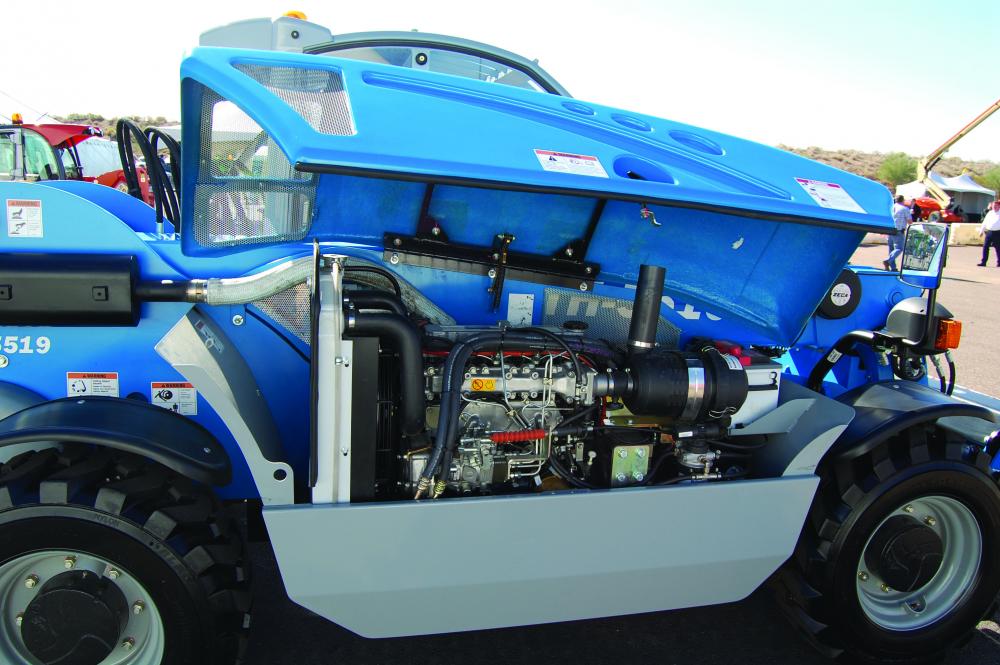
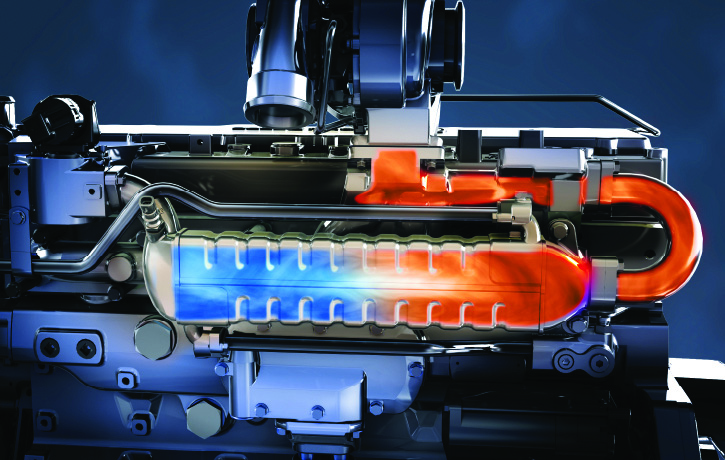
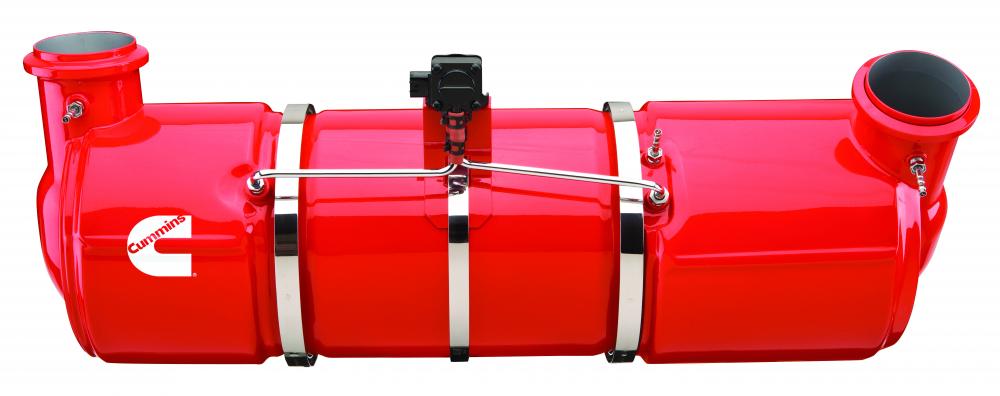
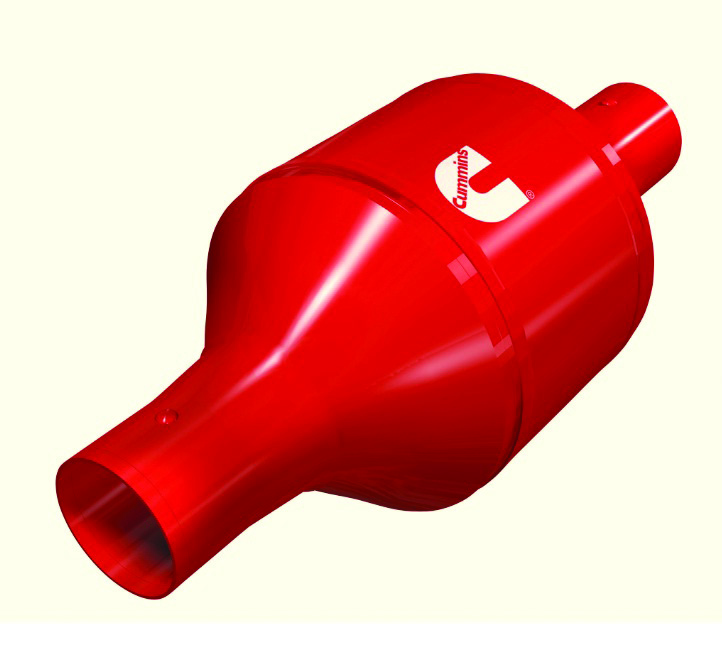
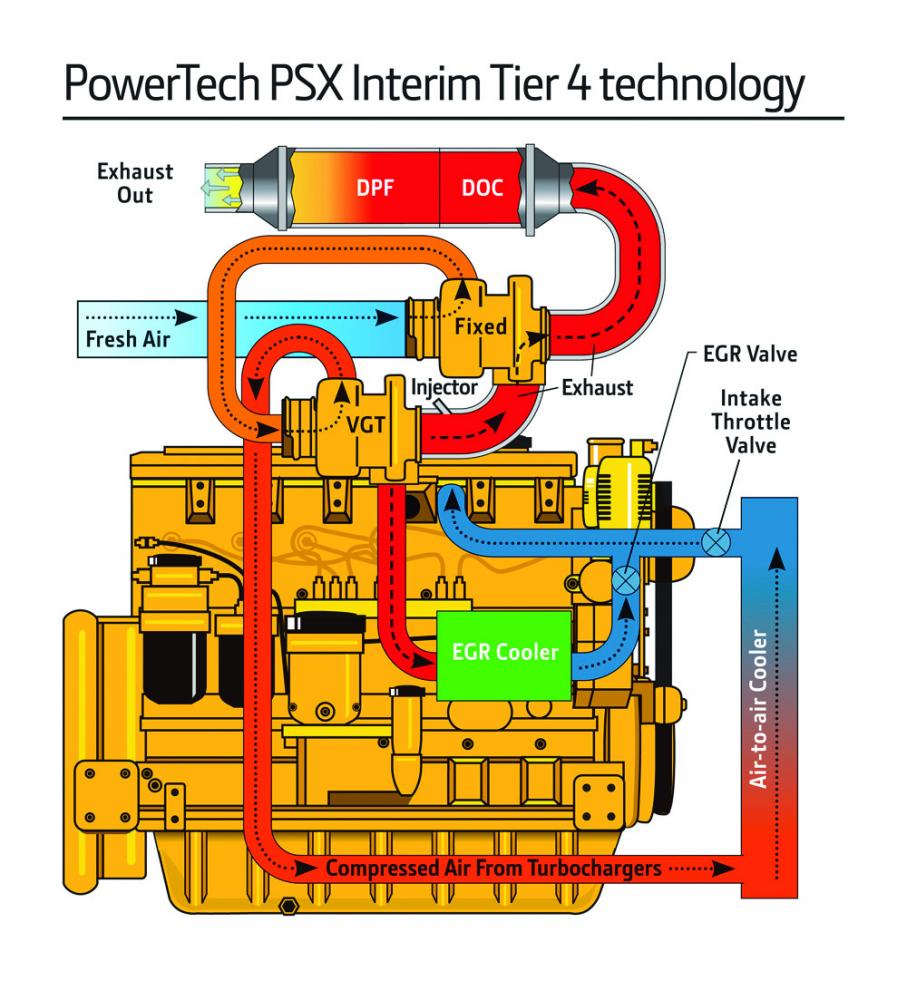
In January 2012, the latest step in the Environmental Protection Agency’s comprehensive national program of lowering nonroad diesel emissions kicked in when Tier 4 Interim regulations took effect for engines with horsepower ratings from 75-174 horsepower.
The Tier 4 Interim level of clean-air regulation requires diesel engines to cut the particulate matter (PM) they emit by 90 percent, compared to the Tier 3 level they had been at before. It also requires diesels to emit about 50 percent less oxides of nitrogen (NOx) than before.
Those changes, and the even tighter Tier 4 Final requirements that phase in over the next three years, pose a challenge for engine makers, for manufacturers of equipment powered by diesel engines, and for customers who buy, use, and maintain diesel-driven equipment.
The mandate for cleaner-running engines primarily affects brand new equipment sold by OEMs. In most cases, contractors and rental companies that own older equipment can keep using it. If that equipment ever needs an engine overhaul, however, the owner may have to upgrade it to a cleaner-running system. One notable exception to owners being able to use existing equipment from earlier EPA tiers is the state of California, which may require equipment that works there to meet current emissions standards, regardless of age.
In applying the clean-air rules, the EPA has divided diesel engines into three principal horsepower ranges. (There are a few other special case groups, such as locomotives, that are outside Lift and Access’ scope of coverage.) Those ranges are 25-74 hp, 75-174 hp, and 175-750 hp. The Tier 4 Interim and Tier 4 Final regulations are being phased in at different times for the different ranges, as shown in the chart below.
Technology choices
Diesel engine manufacturers have several choices of technology they can use to meet the EPA’s clean air standards. Which ones they choose may depend on the engine’s horsepower range, application, the kinds and amounts of emissions that need to be reduced, cost, ease of use and maintenance for the eventual owner, and many other factors. “Cummins leveraged its extensive on-highway experience when selecting technology to meet Tier 4 Interim [off-road] engine requirements," says Kevan Browne, marketing manager for Cummins Inc., Columbus, Ind. “Exhaust after-treatment and emission reduction are not new to Cummins.”
Robert Helvie, regional sales manager for John Deere Power Systems, Waterloo, Iowa, says, “The Deere Interim Tier 4 approach is designed to be convenient for the operator, provide superior total fluid economy, and be part of an integrated vehicle that delivers high overall value.” Yanmar America has chosen to use optimized combustion, cooled EGR, and a particulate filter to meet the Tier 4 requirements.
Kohler chose its Tier 4 technology to eliminate the need for a diesel particulate filter (DPF). “We saw a DPF as a huge issue for the equipment OEM and the end user, so we developed an engine that runs clean enough to meet the over-25 hp. Tier 4 Interim emission requirements without needing one,” says Jeff Wilke, associate product manager of Kohler Diesel Engines, Kohler, Wis. (Kohler has also introduced 56- and 74-hp engines that meet the more stringent Tier 4 Final requirements without using a particulate filter.)
Here are some of the technologies engine makers have in their clean-air arsenals.
• Cleaner combustion: Engine advancements like high-pressure common-rail injection, cylinder mapping, and electronic engine control, are enabling engines to burn fuel more efficiently and run more cleanly. Creating fewer pollutants automatically reduces the amount that need to be treated.
• (C)EGR: Exhaust gas recirculation, or cooled exhaust gas recirculation, redirects part of the engine exhaust back into the engine to cool and reduce peak combustion temperature and pressure. (C)EGR reduces the production of NOx, but tends to increase the amount of particulate matter that an engine puts out.
• DOC: A diesel oxidation catalyst is an exhaust after-treatment that uses a flow-through honeycomb coated with precious metal to break down pollutants as they pass through. It can be used alone or coupled with a diesel particulate filter or a selective catalytic reduction unit. If it can remove enough particulates to meet clean-air standards, a DOC is more economical, smaller, lighter, and lower-maintenance than a diesel particulate filter.
• DDF: Diesel particulate filters are after-treatment devices that significantly reduce emissions of particulate matter (soot). A DPF uses a porous filter to trap soot particles and eventually burn up the accumulated soot trapped inside it. Passive regeneration can be used if the exhaust temperature is hot enough to oxidize the soot. If the operating temperature is not hot enough, active regeneration using diesel fuel can create enough heat to burn the soot into ash. Cummins’ Browne says that active regeneration of its DPF occurs automatically while the equipment continues operating normally. Periodically, the accumulated ash in a DPF must be removed by a certified technician. Some manufacturers have mentioned the possibility of offering exchange programs to make the process more convenient for customers.
• SCR: Selective catalytic reduction systems reduce NOx. The unit injects small amounts of diesel exhaust fluid (DEF) containing urea into the exhaust stream, where it breaks NOx into harmless nitrogen gas and oxygen. An SCR system must be refilled periodically with diesel exhaust fluid, and must be protected from freezing.
Plans for meeting Tier 4 Final
No manufacturer has yet revealed its full plan for meeting Tier 4 Final emission regulations. Some, however, have already mentioned the technology they plan to use in particular power ranges. Among the manufacturers who have previously talked publicly about some of their technology plans are Cummins, John Deere, Kohler, and Perkins.
In the past, Cummins has said its Tier 4 Final solutions will include a Cummins Compact Catalyst (DOC) plus SCR on engines from 75-400 hp. For larger engines, ranging from 400-751 hp, Cummins has said it would use a Cummins Particulate Filter (DPF) plus SCR. At Intermat, Cummins unveiled its new 49-74 hp QSF2.8 engine, a four-cylinder, 2.8-liter model that’s the smallest off-road engine ever offered by the company. It will use a fully passive DOC to meet Tier 4 Final requirements.
In early March of this year, Deere announced that its Tier 4 Final engine technology path would continue its “building-block” approach. Deere's Integrated Emissions Control System (IECS) is an optimized after-treatment solution that combines DOC, DPF, and SCR. At Intermat, Deere reconfirmed that its approach for all engines above 75 hp will combine the IECS with EGR to meet Tier 4 Final requirements. Kohler has started its solutions for Tier 4 Final by rolling out 56 hp and 74.3 hp engines that are compact and meet the stricter standard without a DPF. They use Kohler’s advanced high-pressure common rail direct fuel injection, fuel mapping, EGR, and a DOC to reduce NOx and particulates in minimum space.
Perkins rolled out its first Tier 4 Final engine at ConExpo-Con/Agg in March 2011. The new 400F tops out at 61 hp and carries over 97 percent of parts from its predecessor, says Perkins. Its after-treatment uses a DPF that has been made as compact as possible and designed for a variety of mounting options. The aftertreatment uses passive regeneration, with provisions for active regeneration. At Intermat, Perkins unveiled its six-cylinder 1206F engine, which tops out at 300 hp and uses DOC, DPF, and SCR for after-treatment. The ongoing quest to balance clean air with effective performance and economic feasibility will undoubtedly spawn a number of creative solutions. Although it won’t be easy, the industry and the planet will both benefit.